

Grow your Company’s Sales by $$$% with Referral Marketing
When it comes to growing your business by increasing customer acquisition and sales, referral marketing is something that businesses don’t invest enough resources on.
Referral marketing encourages customers to share your brand with people they know offline and online through word-of-mouth marketing strategy, as opposed to more traditional marketing mediums.
Word-of-mouth is incentivized with referral rewards, which increases the likelihood of sharing for the advocate and purchasing for the referred friend.
So, let’s dive into the reasons why you should get started with referral marketing, some of the most successful referral marketing examples, and how to get started with your very own referral program.
What is referral marketing?
Referral marketing is when you get your customers and other referral sources to tell their friends about you. This way you obtain personalized lead generation at scale.
If done right, referral marketing can prove a highly powerful tactic and one of the best marketing drivers for sales and conversion.
Why referral marketing is so important?
1. More sales from incentivizing your current customers to buy again
Referral marketing programs offer referral rewards to customers (sometimes even potential customers) who act as brand advocates and encourage their friends to make a purchase.
For existing regular customers this will serve as a reward for their support and a chance to gain something for sharing with their friends.
For customers who have not bought from you for a while, a referral reward will be one reason for them to start buying from you again.
2. Higher chances of new purchases due to referral marketing incentives
If you are looking to make a new purchase, which of these two sources would you trust more? An advertisement online or a friend’s recommendation?
It has been proved that we are four times more likely to buy from a friend’s recommendation than from a paid advertisement.
This is because we trust that our friend is less likely to mislead or give us a bad recommendation.
That recommendation is also likely to come from personal experience, which is more personal and relatable.
On the other hand, an advertisement is designed to persuade us to buy. This not only makes it zero-neutral but also less relatable compared to customer reviews.
3. Saves money on acquiring new customers
Focusing on bringing existing customers back for repeat purchases also makes financial sense, as it is cheaper than acquiring a new one.
Convincing a potential customer through traditional advertising channels can be up to 5 times more costly than retaining an existing customer.
Customer retention is generally cheaper because the customer is already familiar with your brand and has tried your products. So you can skip the branding story and go straight to selling.
4. Referral marketing programs are easy to set up and run
Referral marketing can be made extremely simple. If you are using automated referral programs, that is.
Many options out there are really simple: first, you decide the referral rewards for the advocate and referred friend, product discounts or cash being the most popular options.
Next, you can choose what advocates should do to earn their rewards, whether be it after every purchase or after every five.
If you are promoting white label software, for instance, you don’t even have to create a product first.
Once these parameters are set the referral program will pretty much run on its own!
All you have to do next is to advertise it by placing it prominently on your website and social media.
5. Advocates will promote your brand for you with minimal effort on your end
In traditional advertising, thoughts are seeded and conversations are started mainly through advertisements in print, online, and on screens big and small.
These are all costly investments and their effectiveness depends on how long you can keep the ads running.
By incentivizing referrals in a referral program, much of that process is now automated at a very low cost.
Advocates will actively promote on their networks on their own so they can benefit from the referral program.
6. Word-of-mouth is more personalized and targeted than paid advertising
Another additional benefit is that customers will likely share with those who are most likely to benefit from the product.
Traditional advertising relies on reaching as many people as possible to make up for a lower conversion rate. Referral marketing, in contrast, relies on word-of-mouth, which is more about quality than quantity.
If you had a great experience at a particular steak restaurant and your friend told you he was going on a date, chances are you would recommend him to visit that restaurant.
Information shared through word-of-mouth is not only more trustworthy due to a personal connection, but is also best targeted and relevant.
7. You collect valuable data with referral marketing
Customers today love and expect personalization.
By tracking consumer referrals and engagement you can create highly personalized and memorable experiences.
This is also a great way to keep up with the trends and become better at meeting your customers’ needs.
8. Create a website if you don’t have one
It is possible to launch a referral program without a website. However, having one can make your job infinitely easier.
A website, or even a landing page to start with, can provide your brand advocates with a URL that is easy to share among their friends and family.
Not only this, you can equip your website with analytical tools that can give you exhaustive insights into where your referrals are coming from, what platforms are most effective, and why some potential referrals bounce.
These insights can be fed into your marketing feedback loop to improve your landing page that can further increase your referral conversion.
Building a website should not be expensive and can be quickly done with the help of website builder tools like PageCloud.
Best Referral Marketing Campaigns by Real Businesses
Before we dive into the ways you can ace your referral marketing, let’s take a look at some referral marketing success stories.
These companies have managed to acquire massive amounts of users and sales thanks to their successful referral programs.
1. Dropbox – Got 4 Million Users In 15 Months
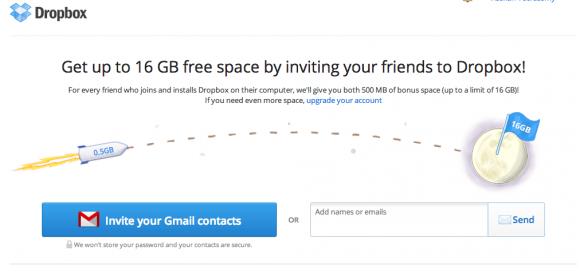
Dropbox goes down in history as one of the most successful referral programs of all time.
Trying to grow their customer base, Dropbox, a cloud-based storage solution, sought to give away free storage space to advocates.
For every successful referral, advocates would earn 500MB of space, to a maximum of 16GB. For Dropbox Plus or Professional, it’s 1GB per referral to a total of 32GB.
This strategy was so effective for a number of reasons.
First, it got everyone to use their core product. The more people used it, the more they would find it hard to change to something else later. The thought of changing providers and migrating gigabytes of stuff would be such a hassle.
Next, the amount of storage space was generous enough for everyone to want to use it. At the same time, no one would be satisfied with the initial amount of storage space given and would then refer their friends to earn more.
Thus, it allowed customers to create a novel behavior loop (using cloud-based storage) and reinforced it with more time invested in it and more space through referrals.
Dropbox was able to use referral marketing to expand its customer base from 100,000 to 4,000,000 users in just 15 months.
They were also able to avoid the cost of traditional customer acquisition, which was estimated to be $233-$388 per customer for a product that costs $99.
2. Uber – Used Referrals To Help Expand Into 50+ Countries In 3 years
Uber, the private ridesharing company that took the world by storm, started off their success through referral marketing too.
In fact, they had referral programs for both drivers and riders. To start things off, first-time riders were given credits for their first Uber ride. After that, those who referred their friends to join were rewarded with more credits.
But what’s really cool was that even drivers were also given rewards for getting others to start driving for Uber.
This allowed Uber to increase their supply of drivers to match the influx of riders signing up through referrals. But Uber didn’t just stop at that. Instead, they set their sights on drivers from Lyft, one of Uber’s largest competitors.
Uber set up a referral campaign to reward current or ex-Lyft drivers who drove for them instead. It didn’t concern them when drivers could jump from Lyft to Uber and jump back after earning the referral rewards from Uber.
That’s because their main goal was to let as many drivers try out Uber as possible.
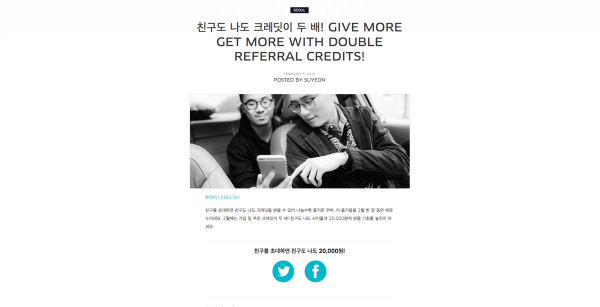
Uber also understood that the taxi problem was different in every state and country. So, they had customized referral reward systems to cater to different cities.
They also had blogs for different states and countries with localized tips and information to help drivers and riders. It worked so well that Uber expanded to over 50 countries in just 3 years!
3. Riff Raff & Co. – Grew into a Million-dollar Company by Leveraging Word-of-Mouth
Riff Raff & Co is an Australian company that specializes in washable plush toys that help babies fall asleep.
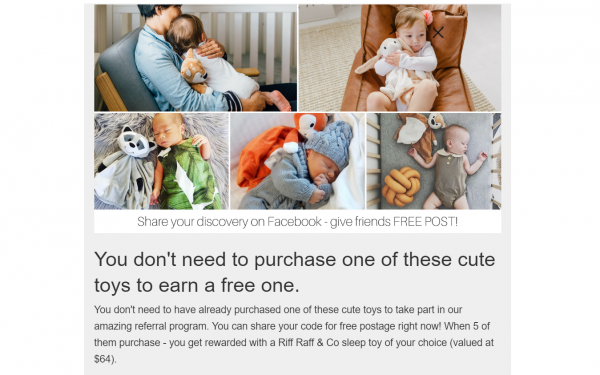
Being mothers themselves, the founders knew that word-of-mouth and referral marketing would work extremely well with their main customer demographic.
The community of motherhood is a close-knit one, where they would often post photos of their babies and talk about their experiences.
Most importantly, they would share what works and what doesn’t to fellow mothers. For Riff Raff & Co, not only did they share because it worked for their children, but because they stood to win a free toy for every five referrals. Having a cumulative reward after five referrals ensured that mothers would only stop sharing after they have hit their target.
This resulted in more effort and time spent sharing through word-of-mouth online and offline. And because mums tend to trust other mums, there was a higher chance a recommendation would convert to a referral purchase.
In an article by Kidspot that interviewed some mothers in Facebook groups, one admin said, “It’s just one post after the other right now and they swear by how well it works for their bubs.”
Today, over 35% of Riff Raff & Co’s sales come from referrals, which goes to show just how powerful referral marketing can be when executed well!
How to get started on referral marketing
Now let’s explore the steps you need to take to get started with referral marketing.
Referral marketing can be done manually, but it isn’t scalable when you have over a hundred referrals to fulfill and emails to send. A referral program takes away much of the effort once set up.
1. Choose your referral rewards and friend offers
One of the most important decisions to make is deciding what rewards to give. There are two things to consider – the referral reward for the advocate, and the offer for the referred friend.
So, retailers choose to give away the same amount to both parties for fairness, while some will give different types of rewards. An example would be a cash reward for the advocate and a discount for the friend.
Here are the most common types of rewards chosen by retailers:
A. Entice them with Cash rewards
Cash is often the favorite type of reward for consumers, but not always so for your company. Rewards are not bound to your brand, so the advocate can choose to simply spend it elsewhere.
Rewards are useful when your product doesn’t necessitate frequent purchasing, like an exam study guide.
Critical Pass makes flashcards designed to help law students study for their bar exams. Since these cards are meant to help students pass, Critical Pass doesn’t expect a repeat purchase. In their case, giving out cash rewards make perfect sense.
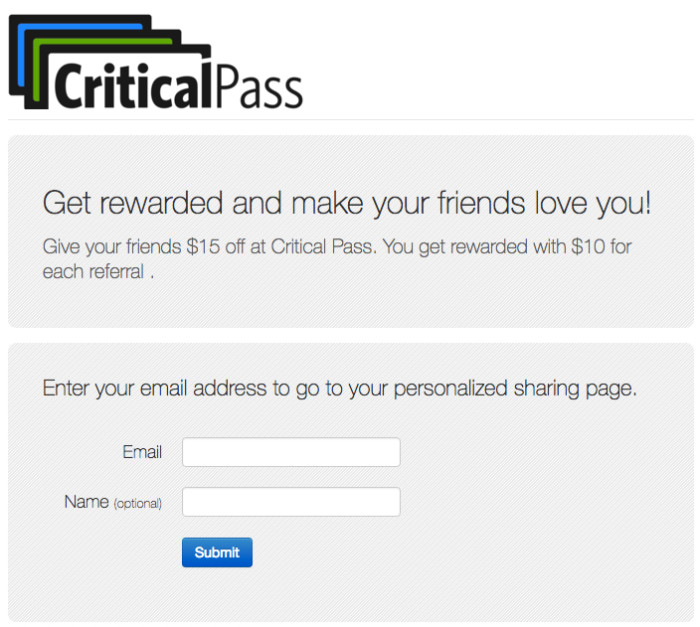
In addition, law students are often short on cash due to the inability to work full-time while studying, so cash is a nice touch.
Tip: You will notice that Critical Pass has chosen to reward advocates with $10 and a $15 discount for referred friends. The slightly lower higher friend offer comes across as being more generous, in our opinion. Also, the advocate won’t be perceived as only sharing because he has more to gain from it.
B. Discounts
Unlike cash, discounts are bound to the brand, guaranteeing a return on investment. This allows you to give a larger discount to make it more attractive, as with Critical Pass.
Discounts are usually given when products allow for or require frequent purchasing. This promotes brand loyalty and rewards customers for using and promoting your brand.
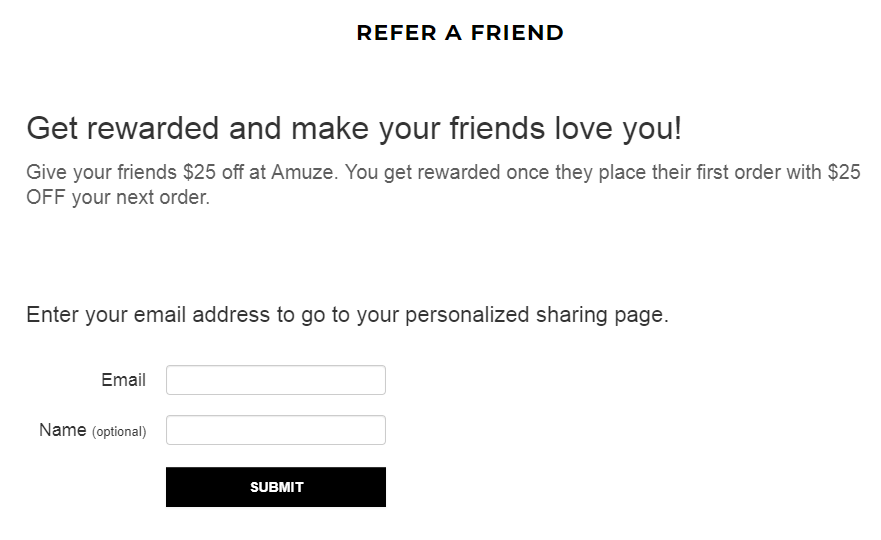
Amuze hosts flash sales for designer luxury goods on their website, and customers can get new deals by visiting their website often.
They feature luxury brands that are not often on discount, making them a go-to for many of their customers.
Discounts work well for Amuze, partly due to the regular purchasing frequency of retail goods. They are also effective because we will always want to share a good deal with the people around us.
C. Freebies -products, shipping
Giving away free stuff is another great option. Freebies can be anything from free shipping, complimentary accessories, or even your core products.
Riff Raff & Co is one example of giving away their core product for free, which in this case works with a cumulative referral system. Even though each referral is the same as a 20% discount, giving an entire product away for free is much more persuasive.
Freebies are also good when you are trying to move products that are complementary to your core products which are harder to sell.
An example would be a mouse or keyboard if your company sells computers. Craft Coffee is a subscription-based coffee beans roast delivery company. They give away one free coffee delivery for every friend referred.
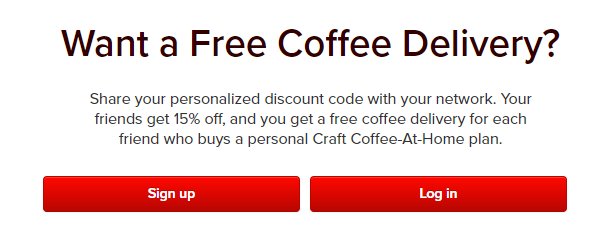
Oftentimes the idea of getting something for free is more powerful than receiving a discount of equivalent value. So, if you’re not planning on giving away cash or discounts, then utilize the power of ‘free’ to make your customers take notice!
2. Make your referral program visible on your website
Now that you’ve decided on what type of rewards to give, you must spread the word.
Displaying it prominently on your website is key to getting potential and existing customers keen to know more about it.
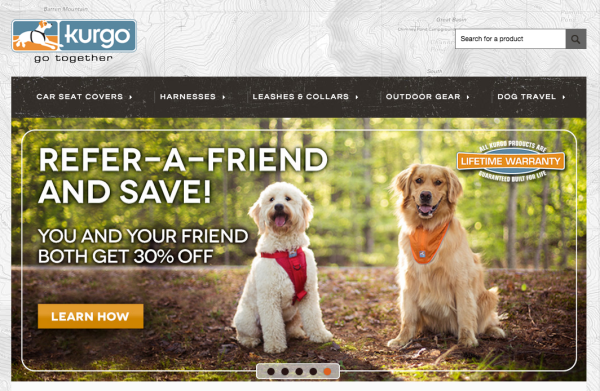
Pet accessory company Kurgo has used one of its image carousels to promote its referral program.
It’s big and bold and gets your attention the moment you reach the site.
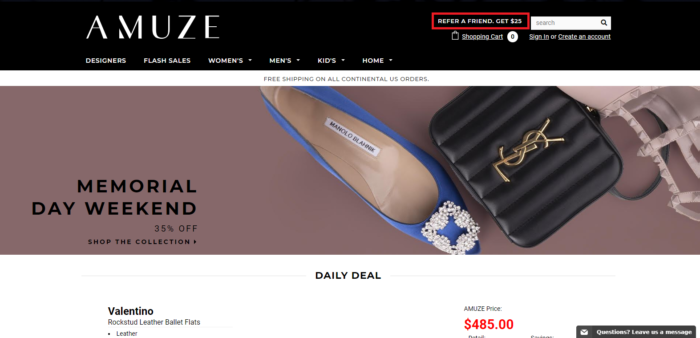
Alternatively, you can go with a more subtle approach like Amuze has done, by placing it on their header banner.
The benefit of this placement is that it will be visible on every page, unlike Kurgo’s hero image on the homepage.
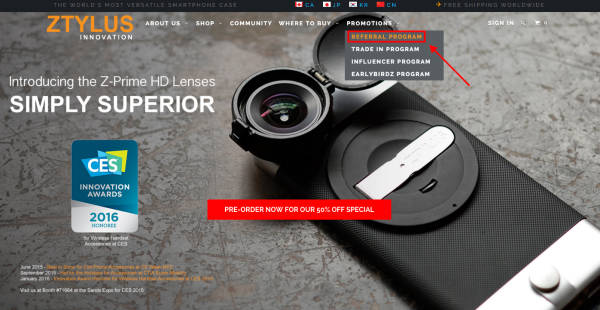
Mobile accessory brand Ztylus has chosen to go with a slightly different approach from Amuze by displaying their referral program under the Promotion tab.
This makes the site look neater, while still having it visible when visitors want to check out the promotions.
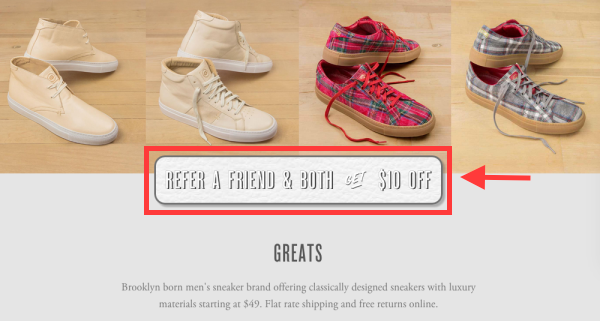
Similar to Kurgo, sneaker company Greats has chosen to promote its referral program on its homepage.
However, they have gone for a smaller design that sits within the main body of the page. Due to the scrolling nature of image carousels, not all images will be seen by visitors. Hence, placing it in the main body of your site can be a good alternative.
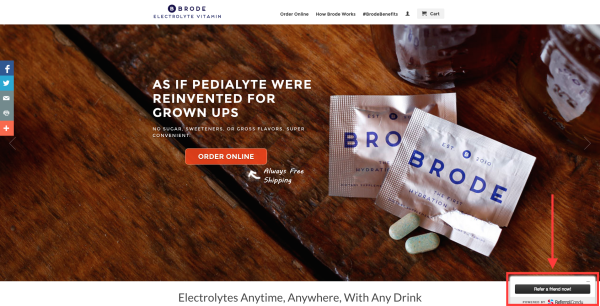
Electrolyte vitamins supplement company Brode has gone with a non-intrusive option of a pop-up. It sits quietly on the bottom right of the screen, informing but not distracting for visitors.
Similar to having it in the header, the pop-up is present on all pages, allowing visitors easy access to it anytime. All of the options above have worked well for different situations, so don’t be afraid to experiment with all of them to see what works best!
3. Tell your customers about your referral program through email
You have ensured that anyone visiting your website will know about your referral program. Now it’s time to let your existing and past customers know about it too.
The best way to reach out to them is through email. Previous customers may have stopped buying from you for any number of reasons, but your referral incentive may just provide the nudge they need to consider you again.
Current and past customers are an essential demographic to tap on as they are already familiar with your brand. If they like your stuff, then a referral program will encourage them to promote your brand and gain something back in return.
Email is also great for reaching out to potential customers who have subscribed to your newsletter but haven’t purchased anything yet.
You can and should mention your referral program in every email you send through your email campaign. It can be a direct email educating them on how the referral program works or part of a newsletter with your latest products.
Cart abandonment emails are also a good time to promote your referral program. Your customers can reconsider checking out if they know they can get a discount by roping their friends in as well.
Tip: When it comes to promoting referral programs in emails, the more the merrier. Reach out to as many people as possible and you will be able to yield better referral figures. Send your emails periodically so your customers won’t forget about it!
4. Make it easy for your advocates to share on social media
Last but not least, we can turn to social media to reach out to even more potential customers.
You can promote your referral program on social media yourself, as well as design natural sharing templates that allow your advocates to share within their own networks.
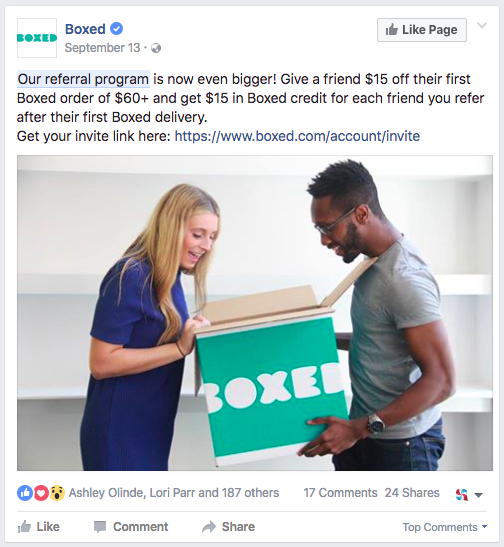
This example from Boxed ticks many boxes: It has a nice embedded image, and states the referral incentives very clearly. When it comes to creating sharing templates for your advocates, the key is to make it as natural sounding as possible.
If your default message is impersonal, your advocates will have to edit it to sound more human and they may give up because it’s just too tedious.
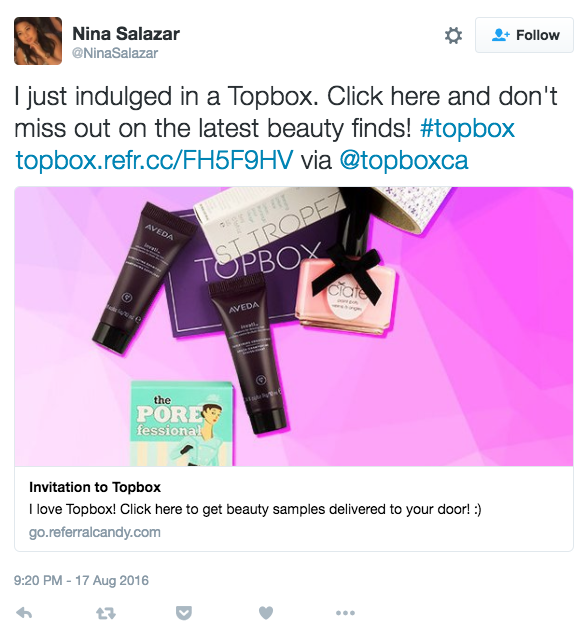
This example from Topbox sounds very natural and customers can just copy it into their social media platforms with minimal editing.
Another way you can use social media for referral marketing is through contests and giveaways.
You can have a lucky draw contest that is valid for anyone who shares a hashtagged post on their feed or anyone who manages to get x amounts of referrals within the deadline.
This way, you not only encourage more word-of-mouth sharing but also give customers a reason to interact with and support your brand.
Referral marketing is about leveraging our human desire to share
We love to share things with others – a great restaurant we visited, a TV series that disappointed us; sharing is a basic human trait.
Referral marketing works through word-of-mouth, relying on your brand message to be shared through conversations online and offline.
It encourages potential customers to check you out and rewards those who have supported you. Doing it right will let you focus your resources on attracting higher-quality customers for your brand.
This way you can redirect your attention to refining your product to make it even better! Are you using any referral marketing techniques? Which do you find the most successful?
Waiting for your thoughts and comments!
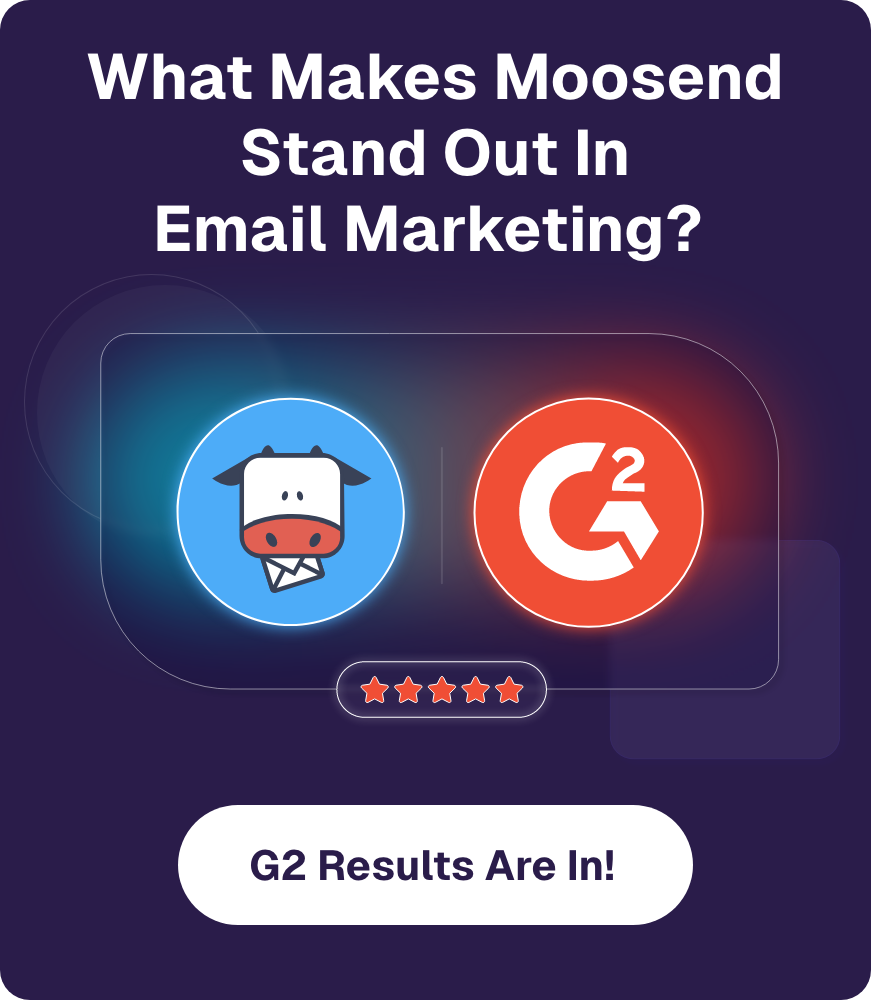

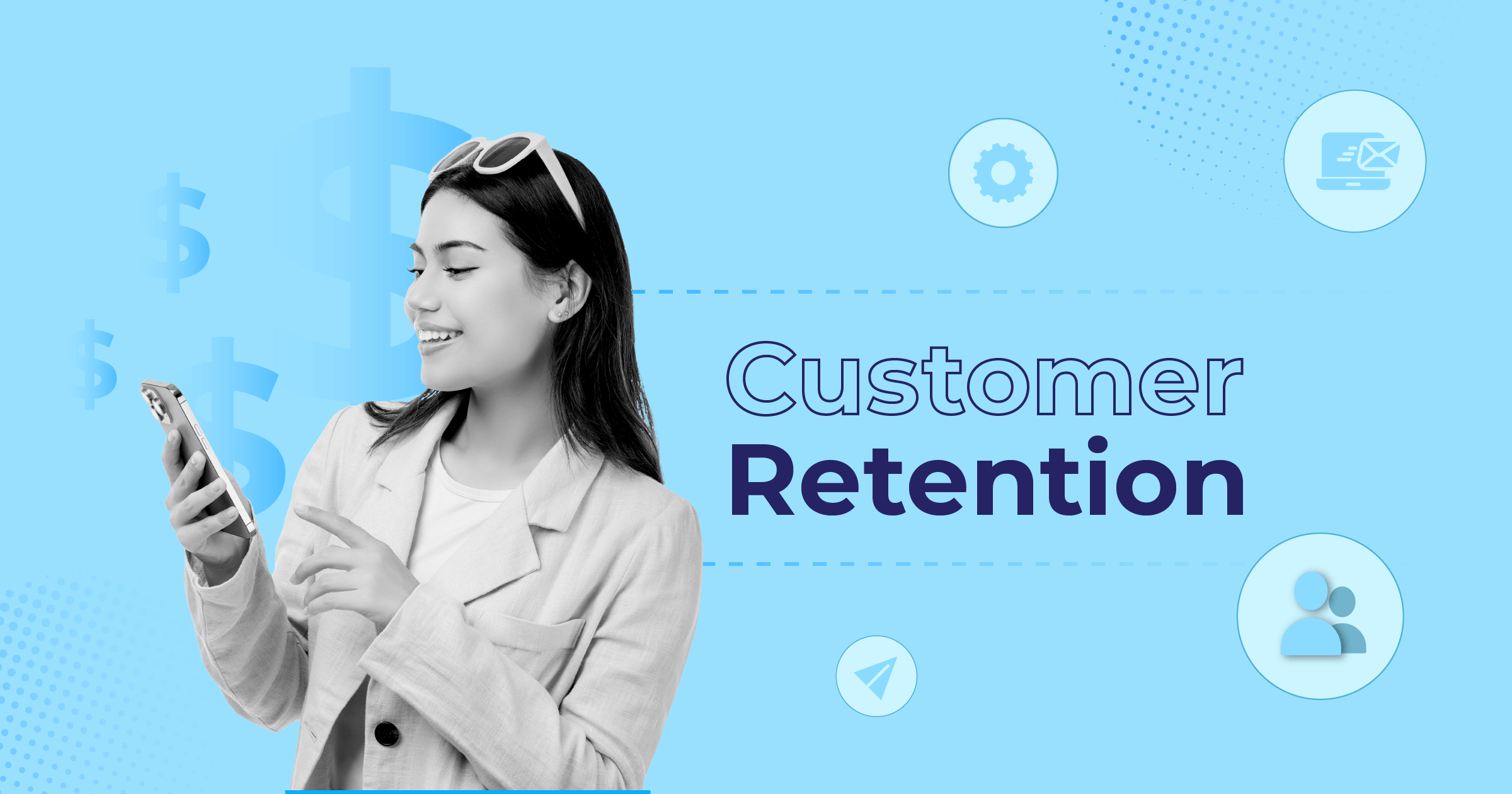
 Published by
Published by

 Published by
Published by
